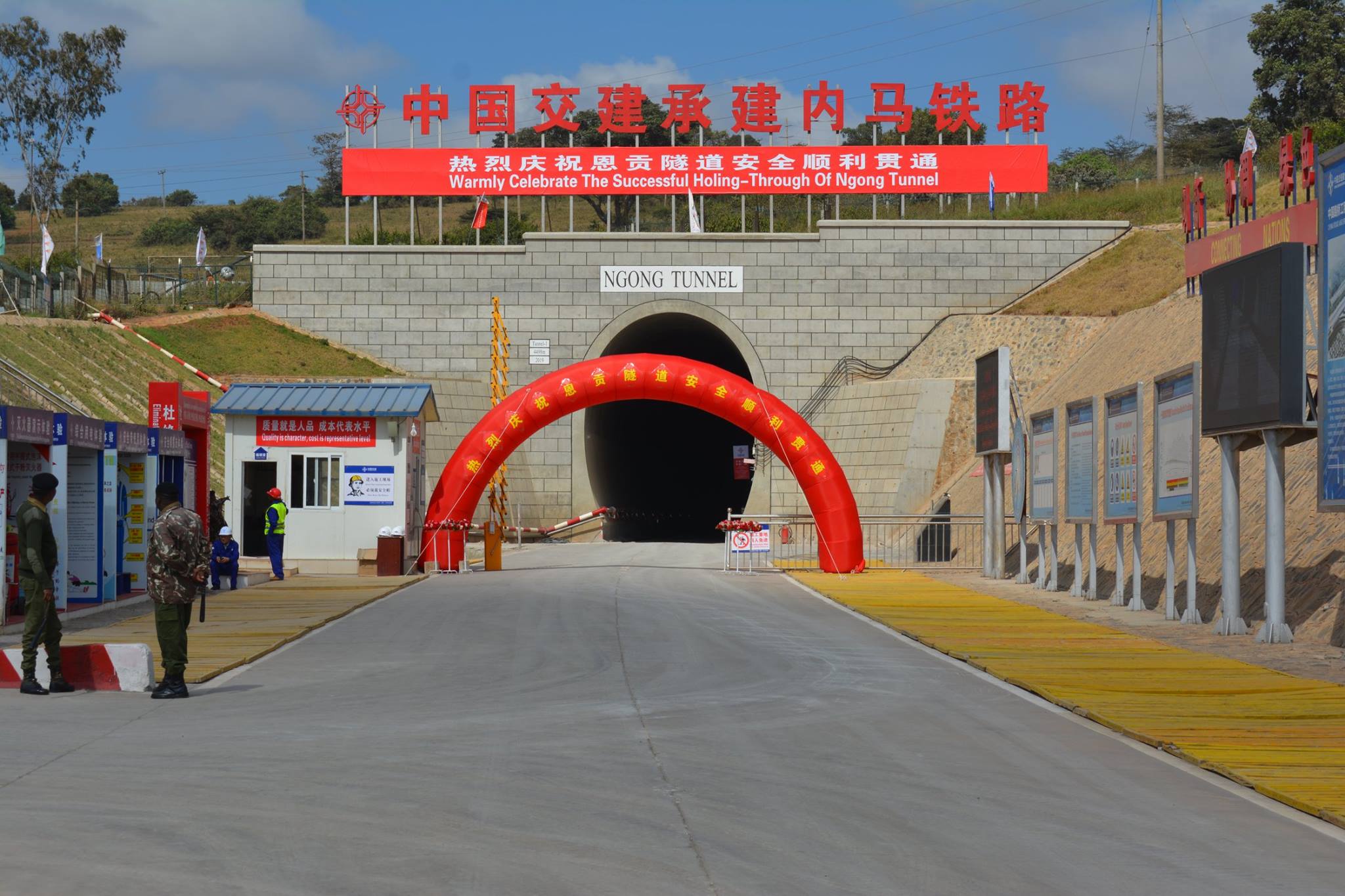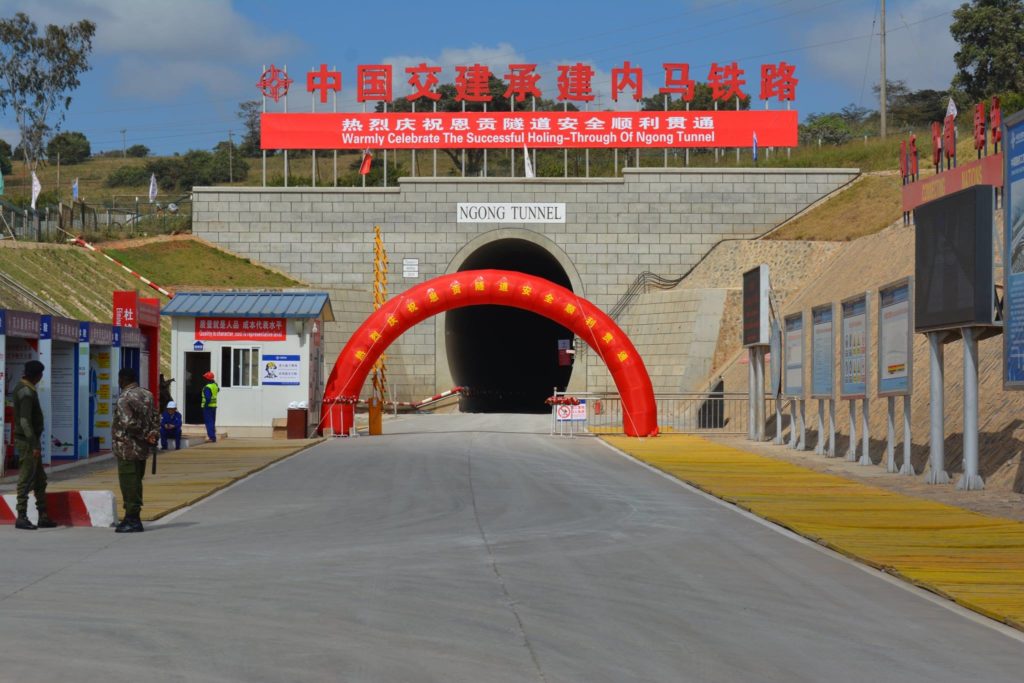Kenya completes longest railway tunnel in E.A amid debt burden concerns


By Fauxile Kibet
Chinese contractors in Kenya have completed the construction of the longest railway tunnel in the region, as a part of the country’s second phase of the Standard Gauge Railway (SGR) amid rising concerns over the East Africa country’s debt burden from China.
The new railway will connect Kenya’s capital Nairobi to Naivasha, North West of Nairobi, an extension from the initial construction from Mombasa in Kenya’s coast to the capital city, which is now operational.
Secretary of Innovation, Digital and Diaspora Communication in the Office of the President Dennis Itumbi on his twitter account announced the completion of the tunnel Monday afternoon, which elicited mixed reactions among Kenyans who said the branding in Chinese did not reflect kenya’s pride on the project.
“Kenya is officially home to the longest railway tunnel in East Africa. SGR Ngong Tunnel completed,” Mr Itumbiu’s tweet read.
Kenyans however took to social media and criticizes the branding on the project saying that it resembles a project in China, with many commenting that every aspect of the project looked Chinese.
Chinese writings were prominent at the site during a tour by journalists, with few English translations done in a relatively smaller font. Other site structures too at the site had Chinese writings with no English translations.
According to Treasury report in July, China now owns 21.3% of Kenya’s external debt which stands at $50 billion. In terms of bilateral debts, China controls 72% amounting to $5.3 billion as of July this year.
Kenya borrowed $3.7 billion from China in 2014 to finance the first phase of the SGR which runs from the coastal city of Mombasa to Nairobi. The project cost $3.27 billion.
SINGLE-TRACK RAILWAY
The tunnel was constructed by the China Communications Construction Company (CCCC), which drilled a 4.5-kilometer tunnel in Ngong area located South West of Kenya’s capital Nairobi.
The tunnel, according to the contractors was designed as a single-track railway tunnel with a clearance height of 9 kilometers and a width of 7 meters.
Local and international journalists were given an exclusive visit to the site, which was constructed using the tunneling method, which was described as economical, efficient and has strong adaptability for different geological and groundwater conditions.
The method also controls surface collapse effectively, and enhances the working environment during construction.